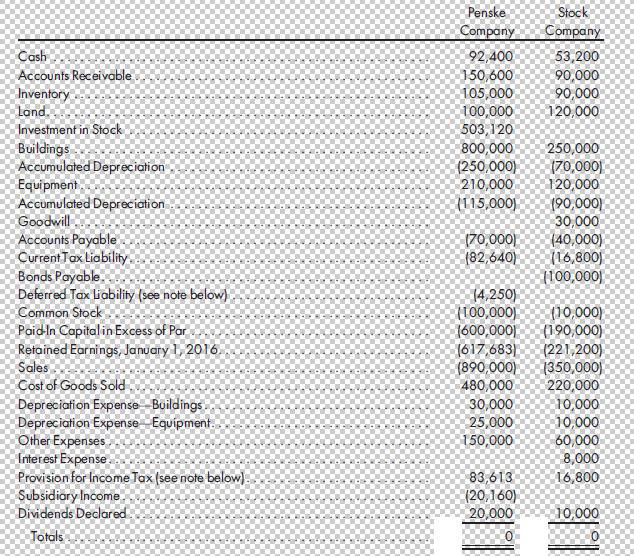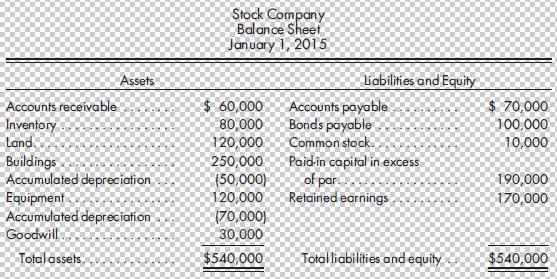Refer to the preceding facts for Penskes acquisition of Stock common stock. Penske uses the simple equity
Question:
Refer to the preceding facts for Penske’s acquisition of Stock common stock. Penske uses the simple equity method to account for its investment in Stock. During 2016, Stock sells $30,000 worth of merchandise to Penske. As a result of these intercompany sales, Penske holds beginning inventory of $12,000 and ending inventory of $16,000 of merchandise acquired from Stock. At December 31, 2016, Penske owes Stock $6,000 from merchandise sales. Stock has a gross profit rate of 30%.
On January 1, 2015, Penske sells equipment having a net book value of $50,000 to Stock for $90,000. The equipment has a 5-year useful life and is depreciated using the straight-line method.
Penske and Stock do not qualify as an affiliated group for tax purposes and, thus, will file separate tax returns. Assume a 40% corporate tax rate and an 80% dividends received exclusion.
On December 31, 2016, Penske and Stock have the following trial balances:


![Deferred tax liability (Penske): Current deferred taxes [($20,160 - $8,000) 20% 40%] Change in Stock](https://dsd5zvtm8ll6.cloudfront.net/images/question_images/1698/0/6/0/0916536573b946371698060091173.jpg)
Required
1. Prepare a value analysis and a determination and distribution of excess schedule.
2. Prepare a consolidated worksheet for the year ended December 31, 2016. Include a provision for income tax and income distribution schedules.
Preceding Facts for Penske’s Acquisition:
On January 1, 2015, Penske Company acquires an 80% interest in Stock Company for $450,000. Stock has the following balance sheet on the date of acquisition:

Buildings, which have a 20-year life, are undervalued by $100,000. Equipment, which has a 5-year life, is undervalued by $50,000. Any remaining excess of cost over book value is attributable to goodwill.
Step by Step Answer:

Advanced Accounting
ISBN: 978-1305084858
12th edition
Authors: Paul M. Fischer, William J. Tayler, Rita H. Cheng





